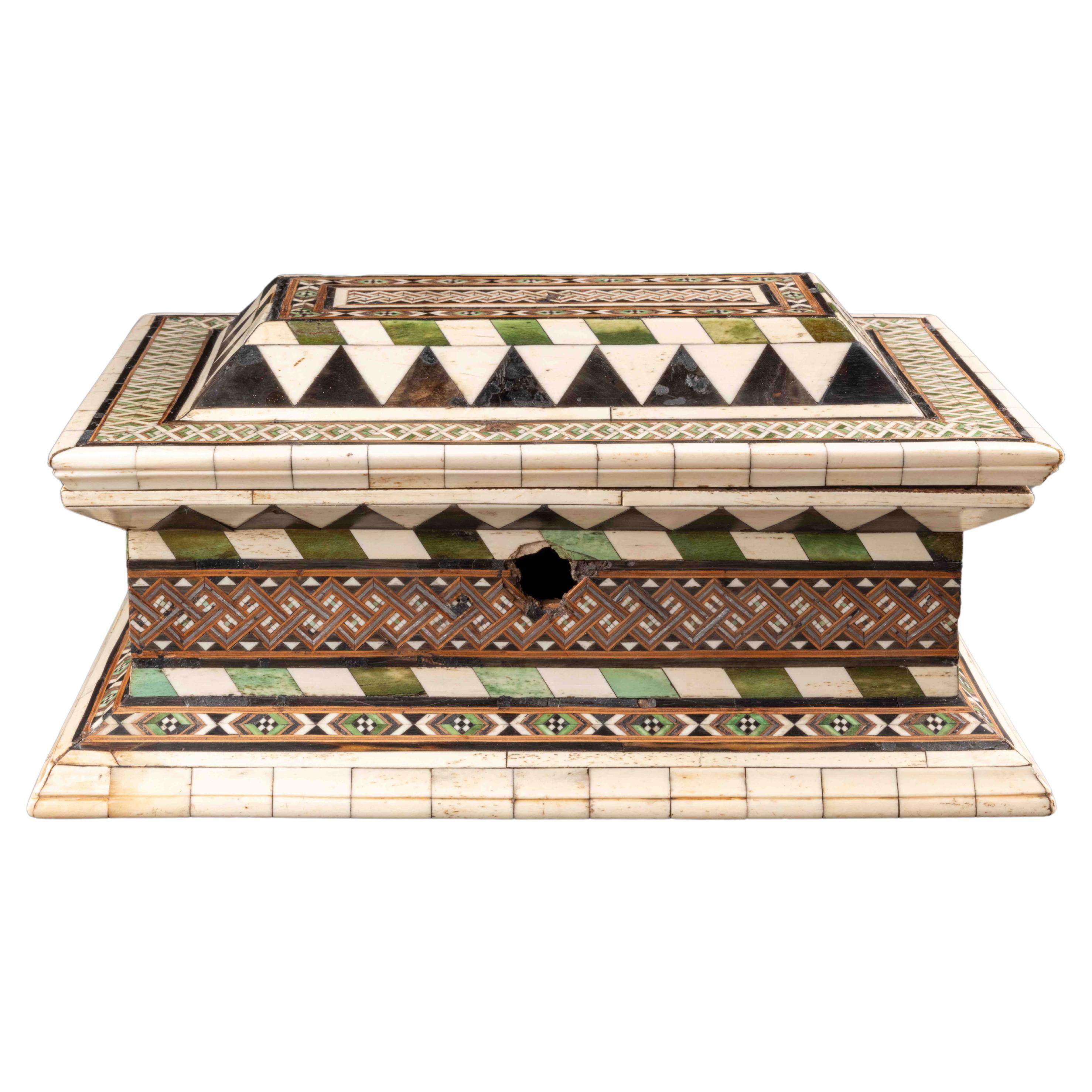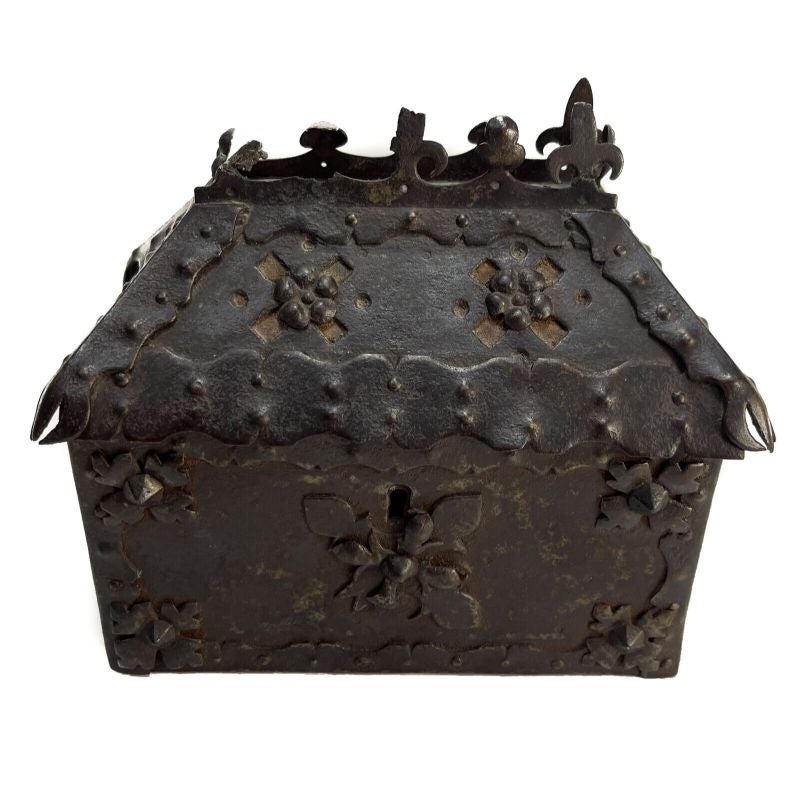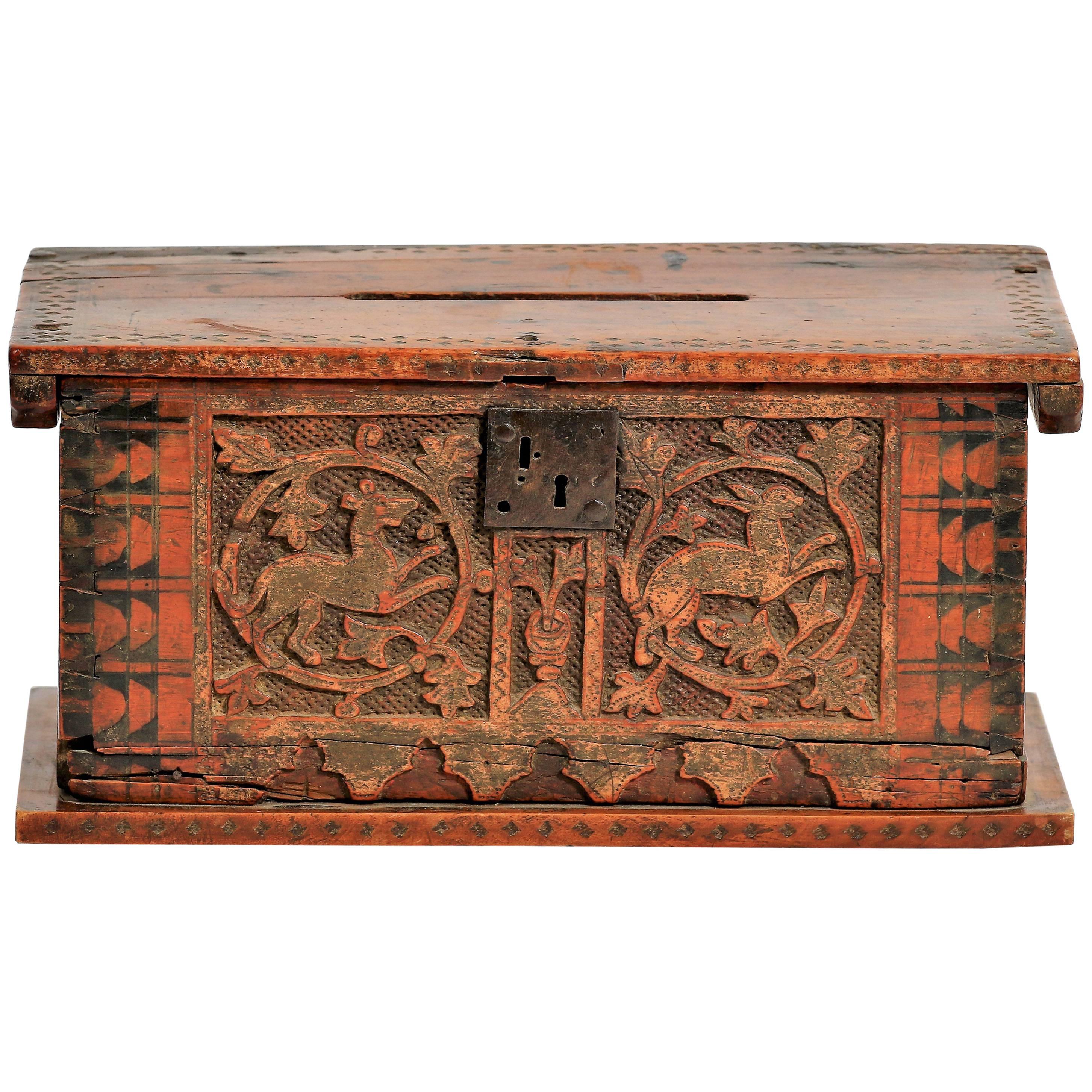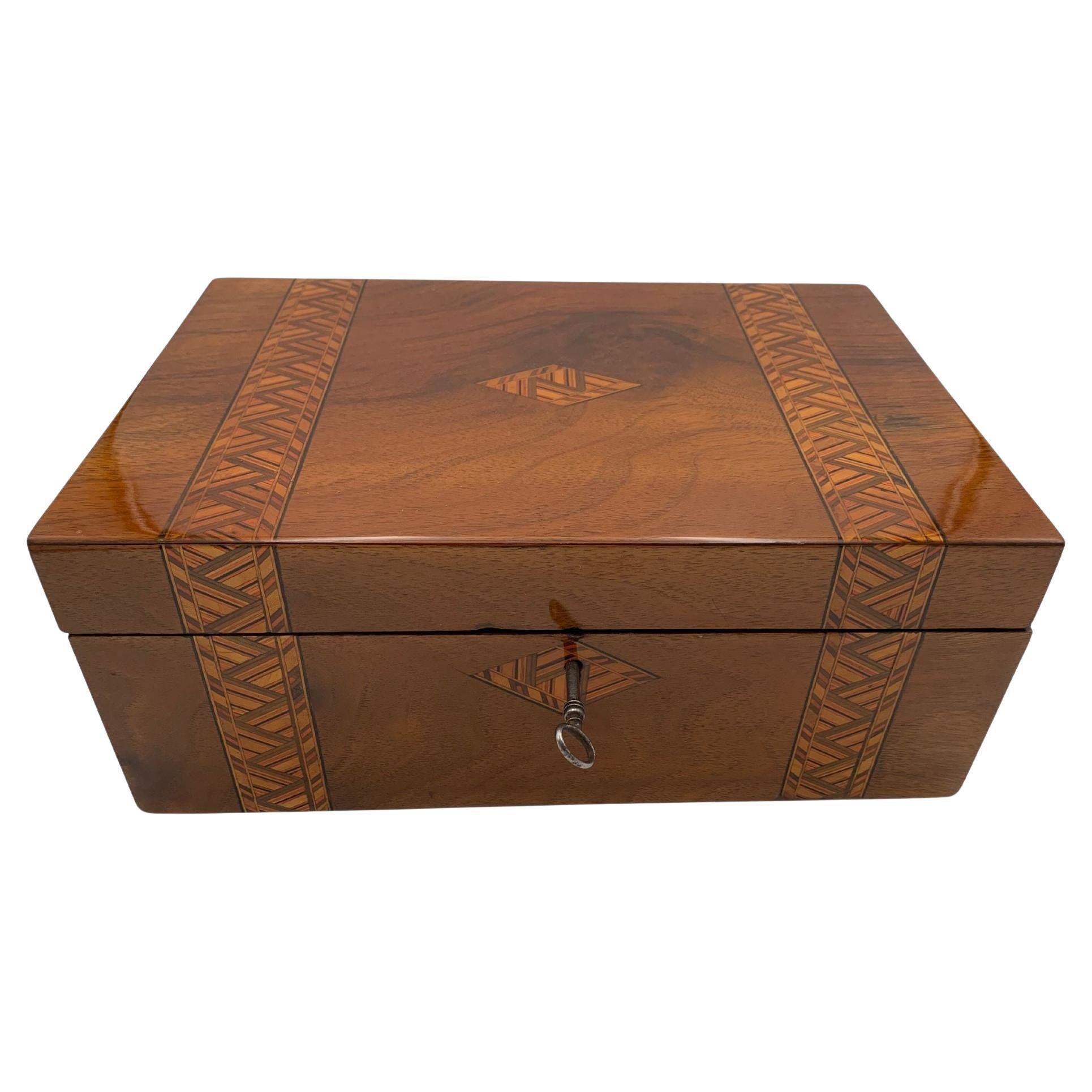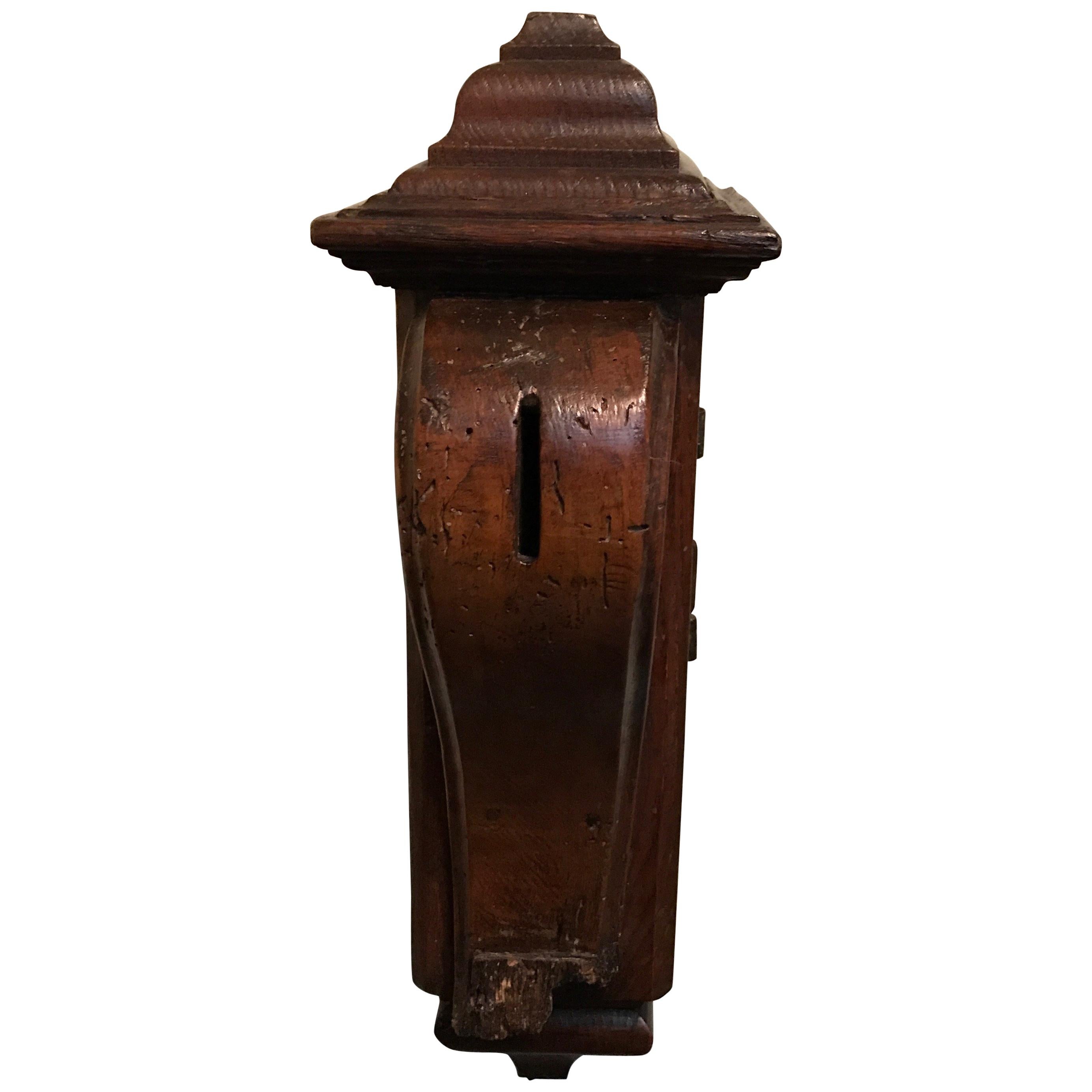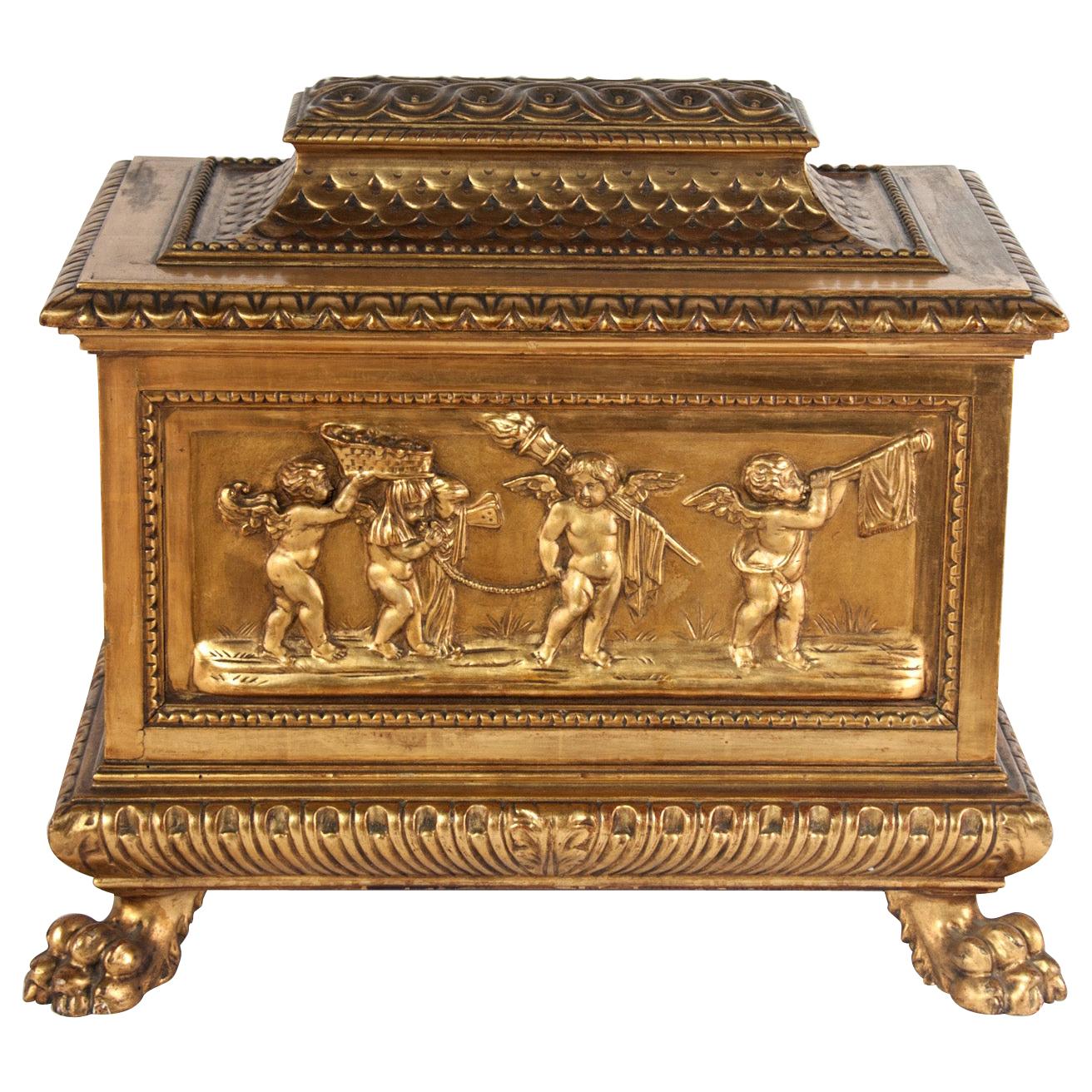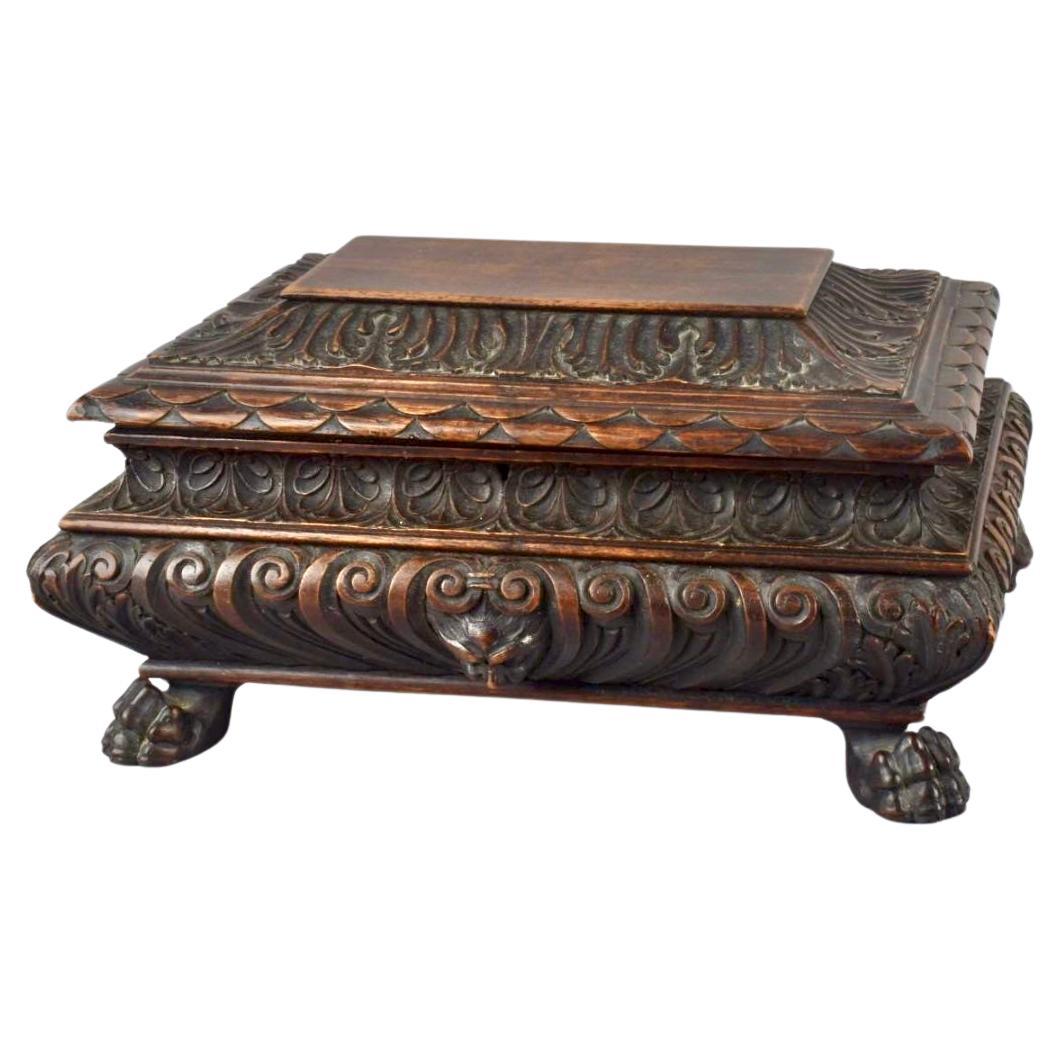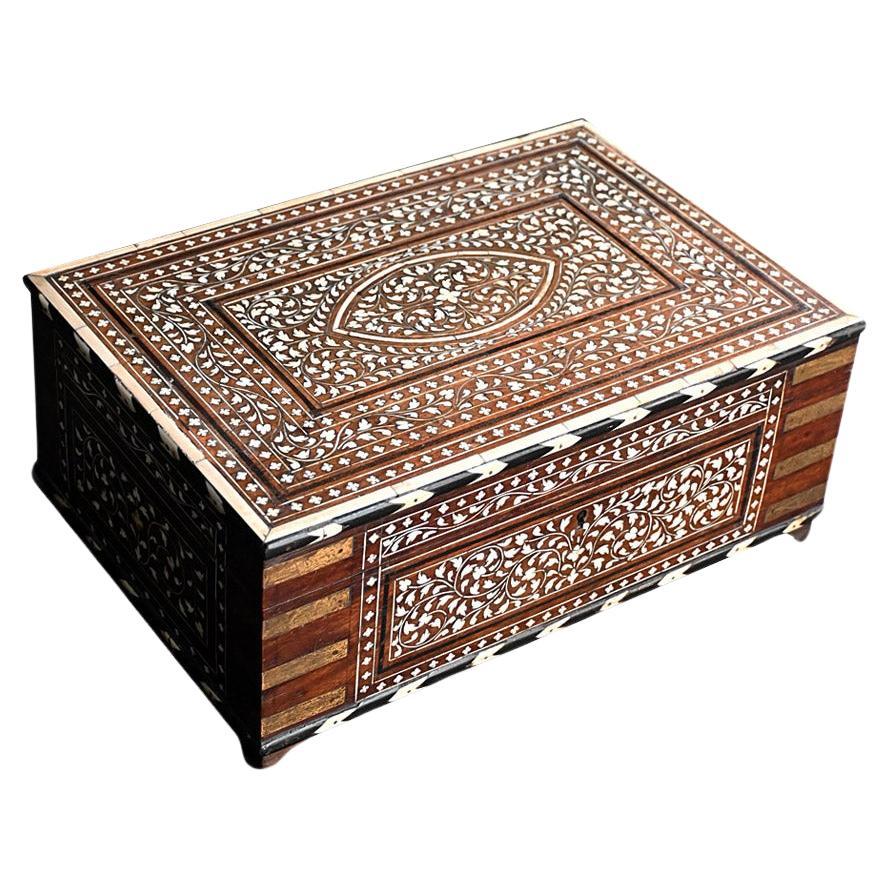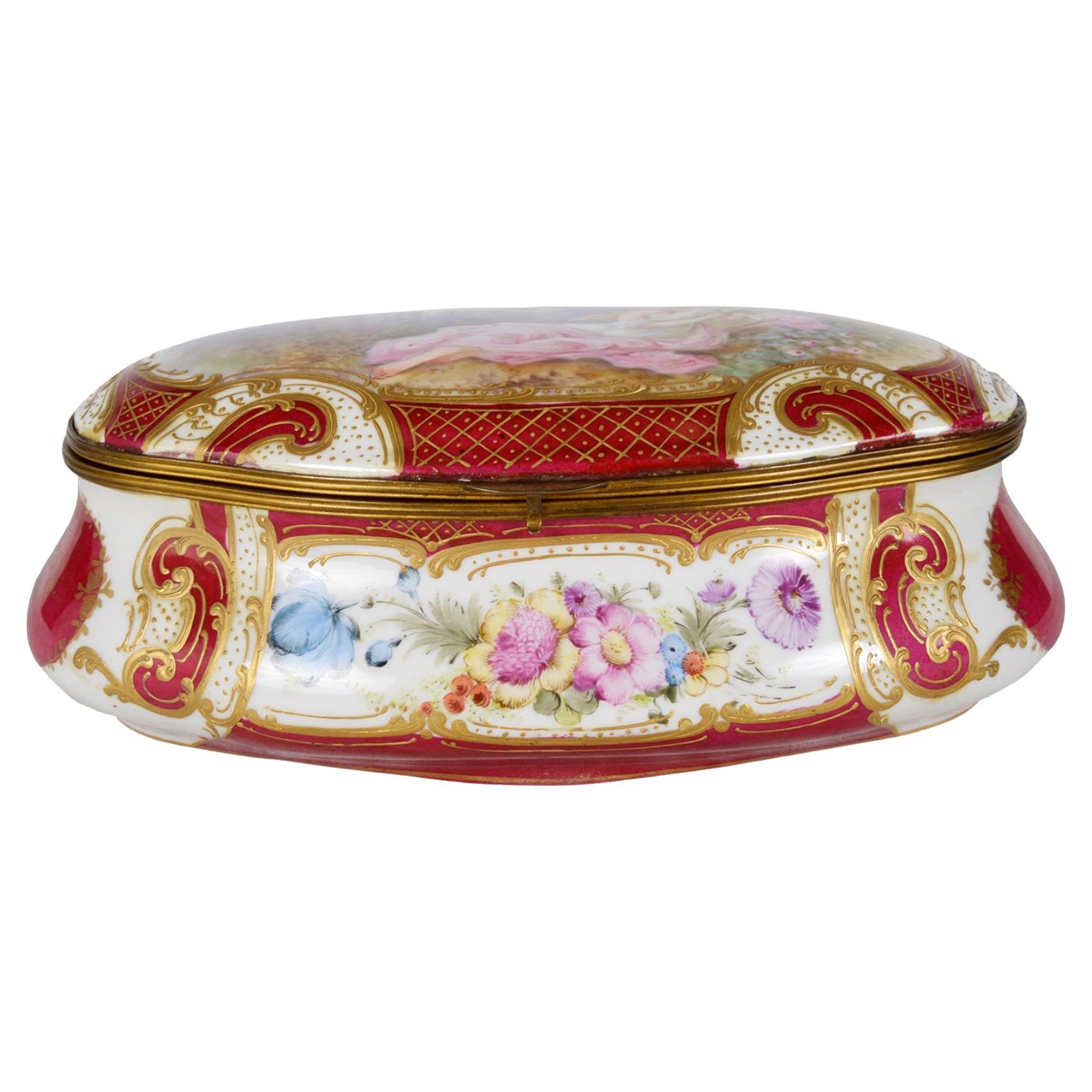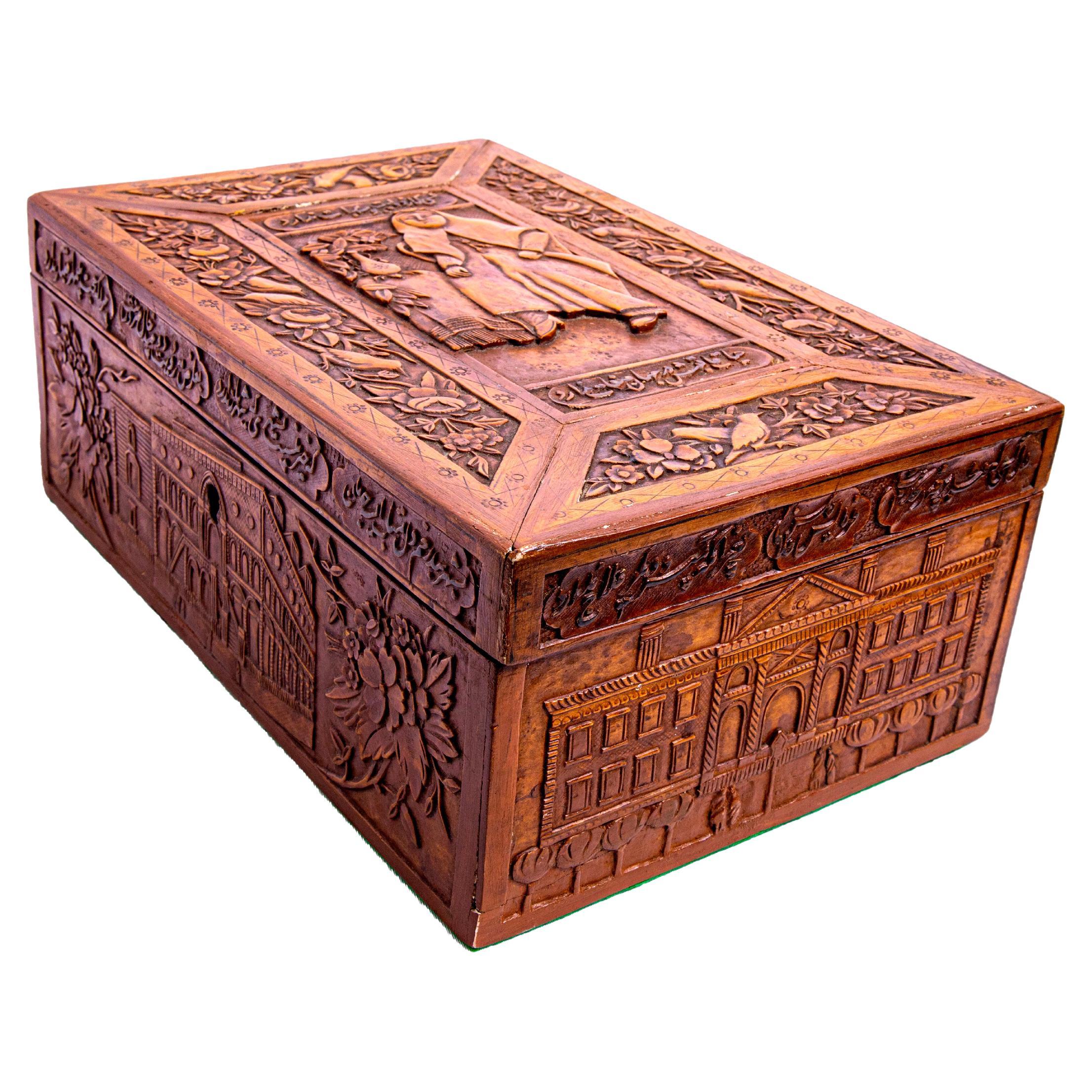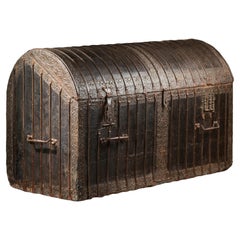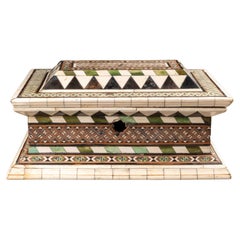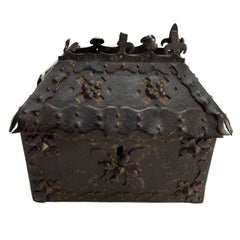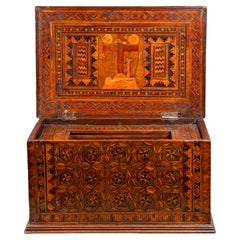
A late 15th century wood inlaid writing casket, Florence, Italy
View Similar Items
Want more images or videos?
Request additional images or videos from the seller
1 of 15
A late 15th century wood inlaid writing casket, Florence, Italy
About the Item
- Dimensions:Height: 9.05 in (22.99 cm)Width: 17.71 in (44.99 cm)Depth: 11.42 in (29.01 cm)
- Style:Renaissance (Of the Period)
- Materials and Techniques:
- Place of Origin:
- Period:
- Date of Manufacture:unknown
- Condition:Wear consistent with age and use.
- Seller Location:PARIS, FR
- Reference Number:1stDibs: LU8168236782961
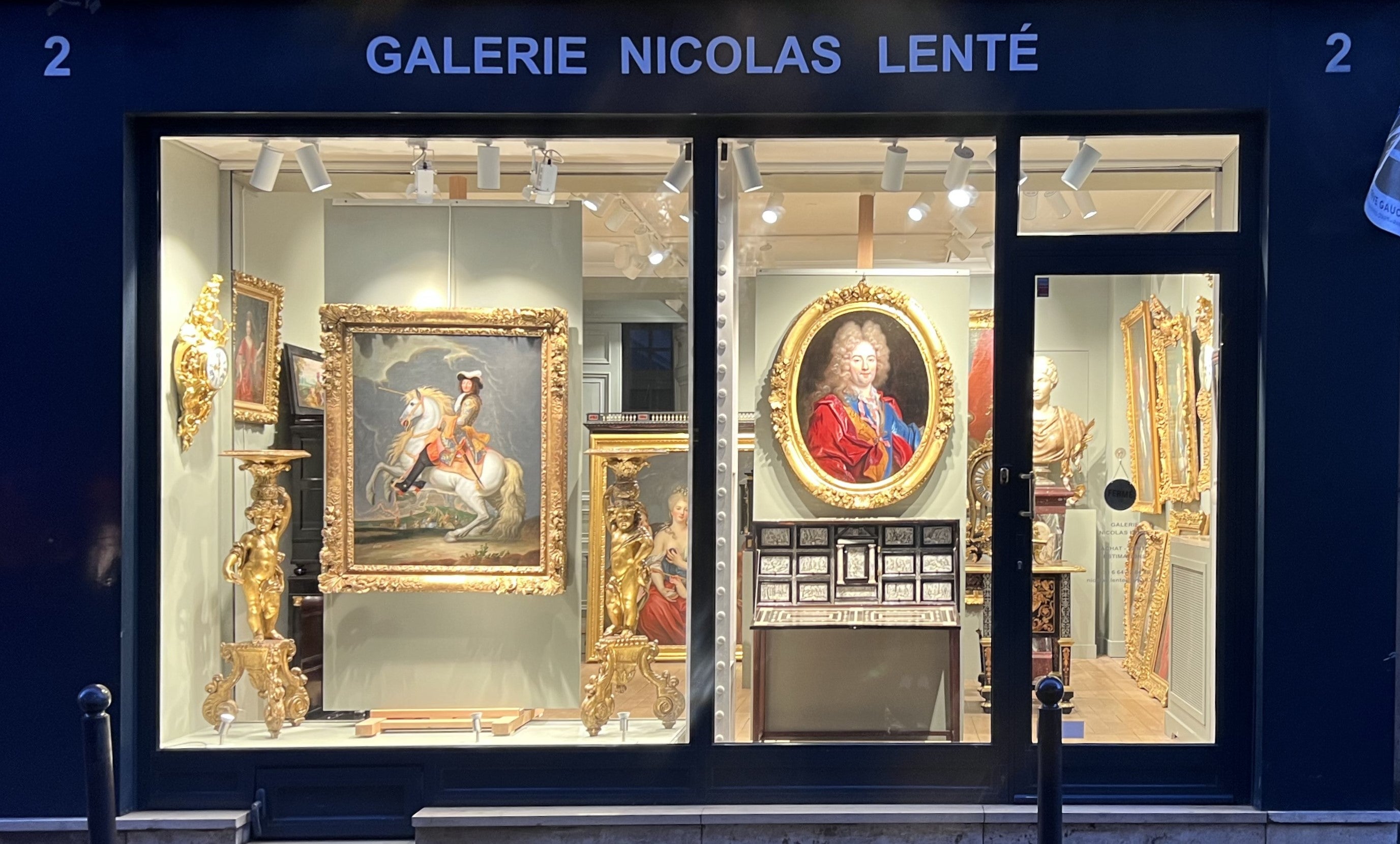
About the Seller
No Reviews Yet
Vetted Seller
These experienced sellers undergo a comprehensive evaluation by our team of in-house experts.
Established in 2011
1stDibs seller since 2023
More From This SellerView All
- A large and exceptional 15th c. Gothic leather and iron bound travelling chestLocated in PARIS, FRLarge leather and iron bound travel chest, very rare in its dimensions Late 15th century, Northern France Dimensions: h.103 cm, w. 178 cm, d. 77cm ( (H. 40.55 in, w. 70.08 in. d. 30.31 in) Our rectangular-shaped chest opens with a rounded lid. It is entirely covered in leather veneered on a wooden core, and decorated with wrought and crafted iron frames and hinges. It is garnished on all sides with iron hinges cut at the ends of Gothic trefoils. On the facade two lock plates with cut-out cloverleaf borders fitted with a hasp (one missing) attached to the cover. The iron bands serving as reinforcements on all sides as well as the central bands are decorated with plant and floral friezes and geometric patterns. These strips are attached to the wood using daisy-headed nails, typical of the French Renaissance. Given its size and loaded weight, our trunk has four carrying handles: two wrought iron side handles, but also two front handles. The interior has a stretched fabric dating from at least the 17th century, we find on the interior sides of the cover the original raspberry-colored vellum. This is a rare model in leather and iron of very large dimensions. Expensive materials, which were only used on small Gothic boxes (20 cm to 50 cm in length) like those in the public collections of many museums. Large chests exceeding 1 meter in length for the sake of economy and simplicity were generally made of wood sometimes covered with iron cladding. We found a large chest in the collections of the Metropolitan Museum of New York, but still smaller than ours (inv. 47.144, dim. H: 22 1/2" W: 50 1/2" D: 21"). There are also two similar large chests (with flat or slightly domed lids) in the collections of the Barcelona Leather...Category
Antique 15th Century and Earlier French Gothic Blanket Chests
MaterialsWrought Iron
- A late 16th century French Renaissance richly carved walnut center tableLocated in PARIS, FRA late 16th century Renaissance richly carved walnut center table France, The Loire Valley area Dimensions: h. 33.46 in., w. 59.45 in., d. 36.22 in. Our remarquable table is a fabu...Category
Antique 16th Century French Renaissance Center Tables
MaterialsWalnut
- Late 17th Century French Gilt Bronze Figure of Venus on Boulle PedestalLocated in PARIS, FRLate 17th century French Gilt Bronze Figure of a Crouching Venus Gilt bronze crouching Venus on a pedestal decorated with Boulle marquetry and...Category
Antique Late 17th Century French Louis XIV Figurative Sculptures
MaterialsBronze
- A set of four French Louis XV 18th century lacquered wood armchairsLocated in PARIS, FRA suite of four Louis XV lacquered woord armchairs circa 1750 Ornated with flowers and leaves, with a red leather upholstery. 18th century, Paris, France Size: height 36.61 inches, ...Category
Antique Mid-18th Century French Louis XV Armchairs
MaterialsWood
- Italian 19th century pair of very tall decorative marble obelisksLocated in PARIS, FRMonumental pair of obelisks veneered with following marbles: pink marble of the Pyrenees, blue Turquin and yellow of Siena. A very decorative pair of tall obelisks that would look g...Category
Antique Late 19th Century Italian Neoclassical Pedestals and Columns
MaterialsMarble, Siena Marble
- Early 18th Century Italian Carved Giltwood Mirror Depicting Four SeasonsLocated in PARIS, FREarly 18th century richly and profusely carved giltwood mirror depicting personnified allegories of the four seasons. The giltwood frame is made of adjourned wood decorated with flowers and leaves forming acanthus leaves spandrels. The pediment is lavishly carved and adorned with scrolls, foliage and flowers. Four putti...Category
Antique Early 18th Century Italian Louis XIV Wall Mirrors
MaterialsGiltwood
$22,911 Sale Price30% Off
You May Also Like
- Embriachi workshop marquetry casket - Northern Italy, 15th centuryLocated in Bruxelles, BEEmbriachi workshop marquetry casket Northern Italy, 15th century Alla certosina inlays (bone, stained bone, pewter and wood) H 28.2 x W 18 x D 14 cm This beautiful casket of rectangular form is richly decorated with the characteristic geometric patterns of the Embriachi style. The intricate geometric patterns are fashioned by juxtaposing lighter and darker pieces of wood, (colored) bone, horn and pewter. The lid and base are framed by a broad band of horn. When ivory became scarce in Europe due to disrupted trade routes, bone was substituted. The attention to Symmetry and balance created an harmonious visual effect Enhancing the overall aesthetic appeal of the casket. The application of geometrical motifs is in Italy known as marquetry ‘alla Certosina’, named after the Certosina Church in Pavia with its famous altarpiece decorated in this way. This is ‘intarsia technique’, a term derived from the Arabic 'tarsi', which means ‘incrustation' recalling ancient mosaics made from various materials. These geometric elements not only enhance the aesthetic appeal of the caskets but also demonstrate the versatility and skill of the artisans in creating multifaceted works of art. ‘Alla Certosina’ became famous through the Northern Italian Embriachi family who achieved a particularly high standard in working in this technique. Venice in particular was known for the production of these luxurious boxes. The caskets, hexagonal or rectangular, surmounted by a lid decorated in several registers constitute the secular, albeit equally renowned component of the workshop’s production, in addition to mirror frames and various everyday objects. The method of fabrication of those objects was based on two concepts that underlay pre-industrial production: standardization and modularity, thanks to a distribution of skills according to the different phases of fabrication. even the realization of the marquetry motifs (in the form of ingots from which portions of the desired size were cut) were therefore entrusted to various specialized craftsmen, as were the assembly phase. Today better known thanks to the extensive research work recently carried out by Michele Tomasi, this workshop owes its name to its founder and owner, the Florentine Baldassare Ubriachi (or degli Embriachi), a merchant and banker established in the Tuscan capital before he settled in Venice in 1395. Together with sculptor Giovanni di Jacopo, who directed the workshop, from the last years of the fourteenth century, Baldassare oversaw a production that was truly original, and still easily recognizable today, comprising monumental altarpieces and various objects, primarily triptychs and caskets. The precise location of the workshop is unknown, except that it originated in Florence and in ca. 1431 there was apparently a workshop in Venice, in the area of S Luca. They employed local workers specializing in 'certosina' (inlay of stained woods, bone and horn), and the workshop produced items carved in bone (usually horse or ox) with wood and bone marquetry. The geometric decoration of Embriachi caskets reflects the artistic complexity and attention to detail that characterized their work. this inlaid casket is a testament to the skill and artistry of the Embriachi family and serves as a stunning example of the decorative arts of the late Middle Ages. Related Literature : E. Berger, Prunk-Kassetten: Europäischen Meisterwerke aus acht Jahrhunderten / Ornamental Caskets...Category
Antique 15th Century and Earlier Italian Renaissance Decorative Boxes
MaterialsPewter
- Medieval Patinated Iron-Mounted Oak Casket, 15th CenturyLocated in Gardena, CAMedieval patinated iron-mounted oak casket, 15th century A Continental Medieval patinated iron mounted oak wood box. 15th Century or earlier. Addition...Category
Antique 15th Century and Earlier Medieval Decorative Boxes
MaterialsIron
- Very Rare Casket Minnekästchen or Box, Germany or Italy, 15th CenturyLocated in Beuzevillette, FRWooden coffret, call minnekästchen, engraved with a dog, a hare and foliage with polychromy remains. During the Middle Age, the hare is a symbol of fertility, joy and represents the Christ...Category
Antique 15th Century and Earlier European Gothic Decorative Boxes
MaterialsIron
- Writing Casket Box, Walnut with Inlays, England, Late 19th CenturyLocated in Regensburg, DEBeautiful antique writing box from the historicism / Victorian style from England, 2nd half of the 19th century. Walnut veneered inlaid with various colored woods. Can be opened ...Category
Antique Late 19th Century German Victorian Decorative Boxes
MaterialsWalnut
- Ecce Homo - Florence, 15th centuryLocated in Bruxelles, BEA terracotta bust "Ecce Homo" Florence, 15th century 53 x 44 x 31 cmCategory
Antique 15th Century and Earlier Italian Renaissance Figurative Sculptures
MaterialsTerracotta
- 15th Century Offertory Box Very Very RareLocated in Diest, Vlaams BrabantFrom the Elisabeth Gasthouse clinic in Diest Flanders between 1250 and 1450 After that year owners changed More info on the internet Or mail me Very rare peace with big history a...Category
Antique 15th Century and Earlier Belgian Baroque Decorative Boxes
MaterialsWood
Recently Viewed
View AllMore Ways To Browse
Wood Geometric Objects
Florentine Diamond Bands
Oriental Gilt Black Box
Gilt Vanity Box
Indian Tin
Jasperware Lidded Box
Vintage Cloisonne Cases
Brass Tissue Holder
Flour Container
Chinese Lacquer Gilt Box
Silk Tufted Box
Gilt Agate
Shoe Shaped Box
Vintage Leather Trinket Box
Antique Faux Tortoiseshell Box
Faux Ivory Horn
Flapper Powder Box
Horn Keepsake Box
